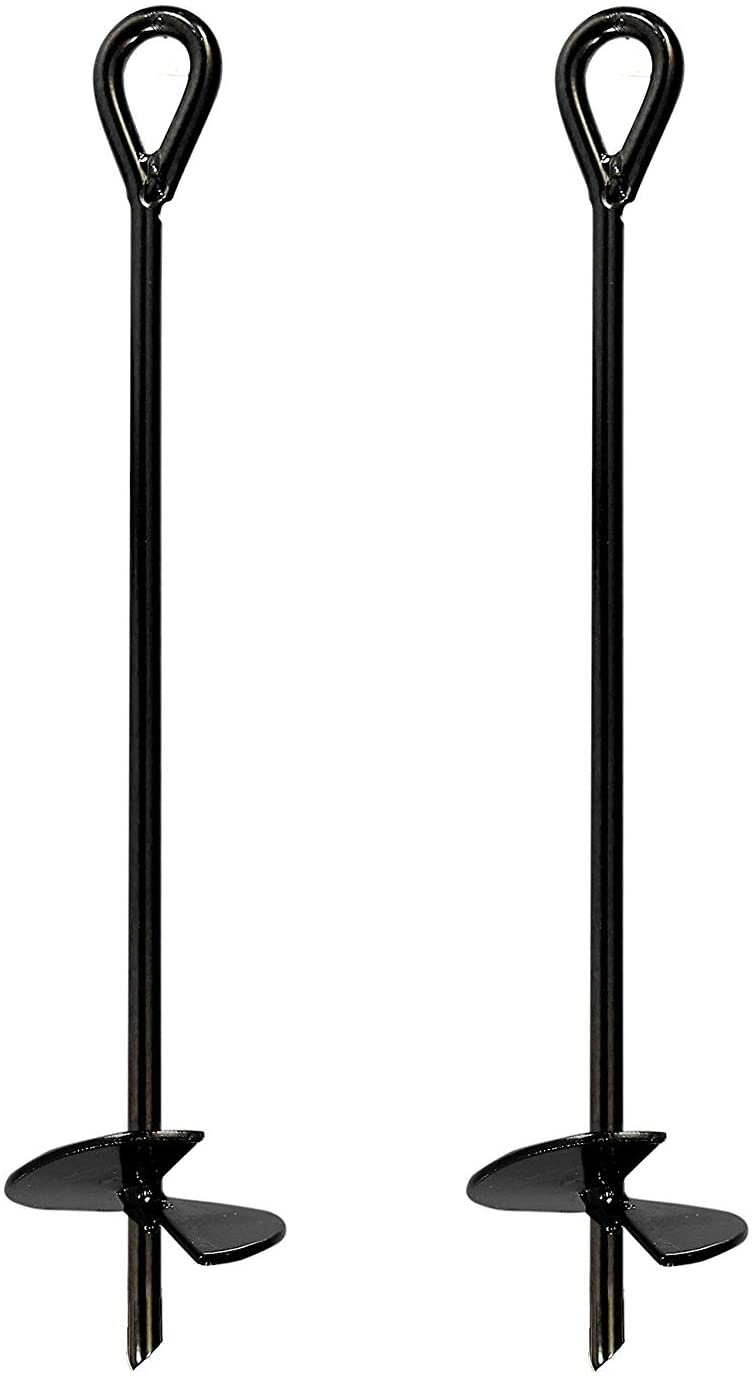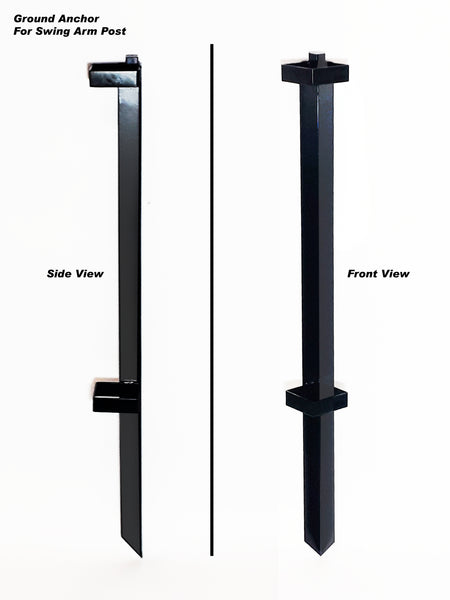An Easy-to-Follow List for Installing and Using a Ground Anchor
An Easy-to-Follow List for Installing and Using a Ground Anchor
Blog Article
Check Out the Various Kinds Of Ground Anchor for Your Following Task
When starting a construction or landscape design task, comprehending the different kinds of ground anchors available is crucial to guaranteeing both stability and longevity (Ground Anchor). From auger anchors, which master diverse dirt conditions, to risk anchors created for temporary installations, the choices are countless. Additionally, concrete and screw supports existing distinct advantages in specific circumstances, while deadman anchors are customized for applications requiring resistance to side forces. The selection of a proper anchor type can substantially affect the general success of your task, prompting further exploration right into their respective benefits and applications.

Auger Anchors
Auger anchors are a prominent choice in numerous construction and landscaping projects as a result of their distinct style and effective anchoring capabilities. These anchors are composed of a helical screw-like shaft that is driven into the ground, allowing for a steady and safe hold. The spiral style helps with simple installment and optimizes resistance against lateral forces, making auger anchors specifically reliable in applications such as secure fencing, temporary frameworks, and disintegration control.
The installment process of auger supports is relatively straightforward. They can be manually or mechanically set up, relying on the dimension and called for depth. This flexibility enables for their usage in diverse soil problems, from sandy to clayey terrains. Additionally, auger anchors can be easily removed and recycled, which contributes to their cost-effectiveness and sustainability.
One of the substantial advantages of auger anchors is their capacity to distribute lots evenly throughout the surrounding dirt, lowering the danger of dirt disruption and reducing environmental impact. In addition, they are much less vulnerable to heaving or loosening up gradually compared to traditional anchoring methods. Auger supports are an exceptional option for projects requiring reliable and sturdy anchoring remedies.

Stake Anchors
When it concerns securing structures in a selection of exterior applications, risk supports provide a reputable and straightforward option. These supports are usually built from durable materials such as steel or light weight aluminum, developed to stand up to ecological anxieties while providing ideal security. Their easy layout enables quick installment, making them a suitable selection for long-term or short-term anchoring requirements.
Risk supports are especially useful in protecting tents, covers, and other lightweight frameworks versus wind and weather. They work by being driven right into the ground at an angle, developing a strong hold that resists pull-out forces - Ground Anchor. The efficiency of risk anchors depends on a number of aspects, including soil type, moisture web content, and the angle of installation
For added safety and security, lots of stake anchors feature accessory points for ropes or straps, permitting tension modifications as necessary. In applications such as landscape design or building and construction, they can efficiently stabilize tools or frameworks on irregular surface. Overall, stake anchors offer a versatile and affordable service for safeguarding various outdoor installations, making them a preferred selection for contractors and do it yourself fanatics alike.
Concrete Anchors
Concrete anchors offer a durable service for securing structures to concrete surfaces, making sure security and safety in numerous applications. These anchors are necessary for projects varying from residential building and constructions to large industrial installations. They can be found in different kinds, see here now including expansion supports, adhesive supports, and undercut anchors, each developed for details tons needs and environmental problems.
Development anchors depend on mechanical devices to grip the concrete when mounted. They are excellent for tool to sturdy applications. Adhesive anchors use high-strength epoxy or material to bond the support to the concrete, providing exceptional load-bearing capacities, especially in split concrete circumstances. Undercut supports develop a special shape within the concrete, offering extraordinary holding power, particularly in applications where tensile lots prevail.
Selecting the suitable concrete support involves considering aspects such as the weight of the lots, the condition of the concrete, and environmental conditions. Proper setup methods are crucial to guarantee optimal performance and integrity. When implemented correctly, concrete supports significantly boost the structural honesty of various jobs, making them vital in modern construction practices. Understanding the details demands of your project will assist in picking the right sort of concrete support for the job.
Screw Anchors

Screw supports are a flexible fastening option that can be effectively utilized in a selection of applications where standard concrete supports might not be enough. These anchors include a helical design that allows them to be quickly driven right into the ground, making them perfect for usage in soil and other substratums. Their one-of-a-kind framework provides superb holding power and resistance to pull-out pressures, making investigate this site them ideal for various jobs, from landscaping to architectural support.
One of the main benefits of screw supports is their ease of installment. They call for very little devices and can usually be set up without the demand for excavation, which saves both time and labor costs. Additionally, screw anchors can be removed and reused, offering a lasting solution for short-lived applications.
Screw anchors are particularly useful in locations where soil problems are testing, such as sandy or loose dirts. Their capability to be mounted at varying depths enables modification based on details project demands. Overall, screw supports provide a efficient and dependable securing method, making them an exceptional option for professionals and engineers seeking reliable solutions discover this info here for their jobs.
Deadman Anchors
Deadman supports function as a robust option for maintaining structures in challenging problems, specifically where standard securing techniques may drop brief. These supports are composed of big, heavy objects buried underground, which produce resistance against lateral forces. The style typically includes a horizontal component, such as a block of concrete or a metal plate, buried in the soil, to which cords or straps are connected.
The efficiency of deadman anchors exists in their capability to distribute tons over a larger location, decreasing the danger of failure in unpredictable soil conditions. They are especially valuable in applications such as preserving walls, momentary structures, and slope stabilization, where soil activity can compromise the stability of the framework.
Installment of deadman anchors calls for cautious preparation to ensure they are positioned at the correct deepness and orientation, maximizing their load-bearing ability. While they might need even more labor and product than lightweight anchors, their dependability in negative problems makes them indispensable for lasting jobs. Furthermore, deadman anchors are flexible and can be adjusted to different applications, making them a go-to choice for engineers dealing with one-of-a-kind challenges in their projects.
Conclusion
Auger supports excel in diverse dirt conditions, while risk supports suit momentary applications. For concrete surface areas, development and adhesive anchors supply reputable alternatives, and screw anchors offer convenience in tough terrains.
Furthermore, concrete and screw anchors existing unique benefits in certain circumstances, while deadman supports are customized for applications requiring resistance to lateral forces - Ground Anchor.Auger anchors are a popular choice in various construction and landscape design projects due to their distinct style and effective anchoring abilities. They come in different kinds, consisting of development supports, adhesive supports, and undercut supports, each made for certain tons demands and environmental conditions
Adhesive supports make use of high-strength epoxy or material to bond the anchor to the concrete, using exceptional load-bearing abilities, specifically in split concrete circumstances. Generally, screw supports offer a reliable and trustworthy anchoring approach, making them an excellent choice for professionals and designers looking for efficient solutions for their tasks.
Report this page